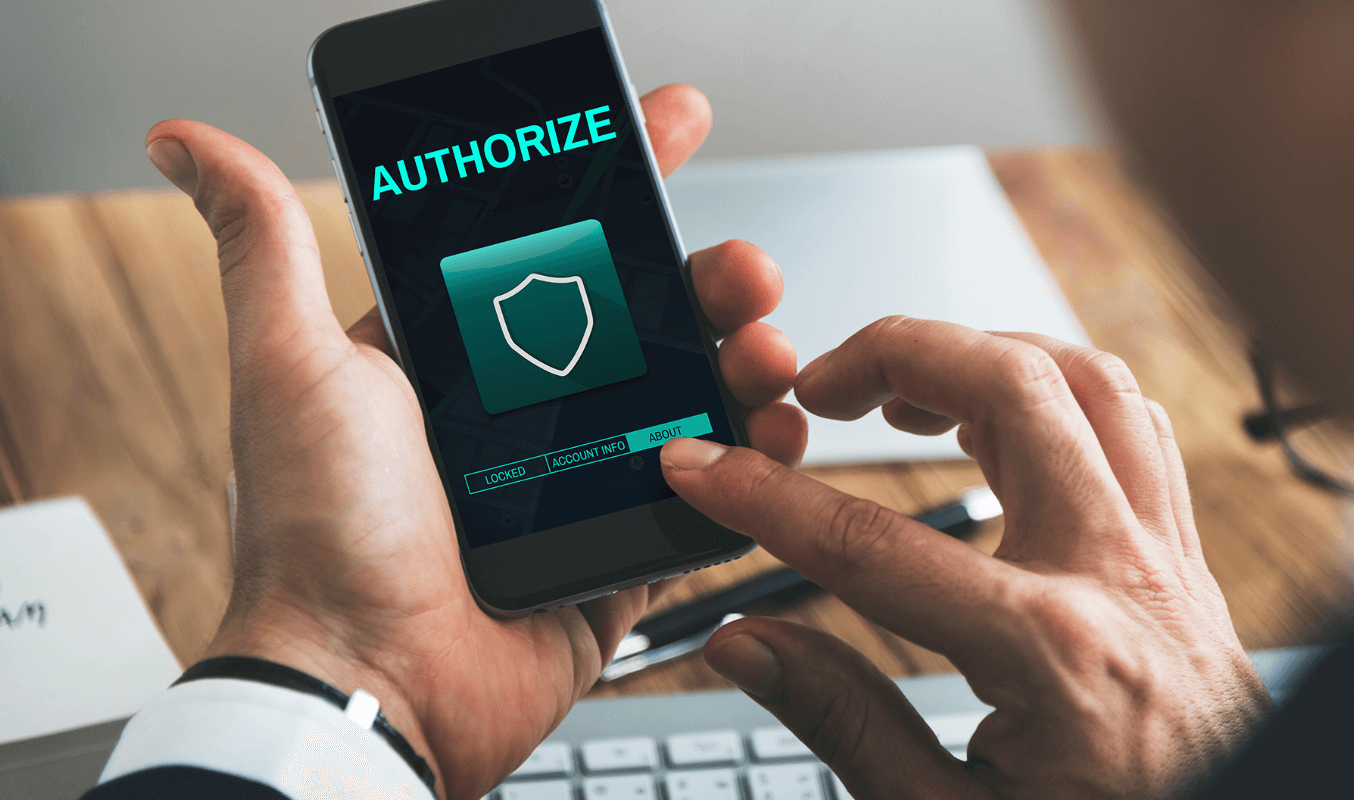As companies shift to a digital workplace, becoming increasingly dependent on technology, their susceptibility to digital threats grows. Companies are now targets of cyber threats that may compromise their cybersecurity measures. How should organizations manage digital risk, and what is this exactly?
At a glance:
- Digital Risks and Cybercrime
- Types of Cyberthreats
- Data Protection
- Cybersecurity Best Practices
- Hosting Options
Digital Risk and Cybercrime
Every new device or software added to the company’s infrastructure introduces vulnerabilities — digital risk — that can cause disruptions. Digital risk is, therefore, embedded in the adoption of new technology solutions and digital transformation.
In today’s boards and organizations, the adoption of technology is crucial in boosting operational efficiency and streamlining collaboration. Many businesses and managements are aggressively advancing their processes and operations to drive productivity and growth. However, with the benefits of digitalizing the tools and processes, it’s important to keep in mind that there are risks in shifting with technology. These digital risks are inherent in every industry.

Cybercrime is the infamous form of digital risk many organizations are eyeing to prevent. Cybercrime is a form of criminal activity that targets a computer or network that is often motivated by political, personal, or organizational reasons. Given this, companies are taking extra measures to boost their security to protect private information.
Nonetheless, as mentioned, digital transformation is a factor in the susceptibility of companies to digital risks.
Types of Digital Risks
Every company experiences the threats brought about by transitioning into the digital space. Below are the digital risks that most organizations have experienced, prevented, and resolved.
Cyberattacks
With the growing reliance on technology to support a remote workforce, cyberattacks are bound to increase. Additionally, as digital assets are moved away from internal networks, and employees connect externally to the company’s digital environments, unauthorized access to sensitive company data increases rapidly.
Cybersecurity risks can impede a company’s business continuity. The objective of these attacks is to access confidential information for the benefit of using them for malicious activities — such as extortion, company image tampering, and delaying business processes.
Web application attack is an example of this risk. In this type, malicious actors or hackers often acquire sensitive information and public access from websites or databases online. Common examples include SQL injections which target databases directly and cross-site scripting which attackers input malicious codes in vulnerable web apps to trick users to redirect to phishing sites.
Explore the cyberattacks that can harm your company based on your vulnerabilities.
Third-party Risks
Outsourcing third-party vendors or service providers has seen valuable impacts, such as greater efficiency in terms of production, innovation, and delivery. However, as companies embrace software solutions to digitize operations, they risk losing control of data to third-party providers. Consequently, every additional third-party vendor expands the risk surface.
Collaborating with third-party vendors can impose data breaches, especially through cloud adoption. In these attacks, intermediaries are used, such as IT service providers, to infiltrate the target’s network and access sensitive corporate data. Failure to prevent these attacks can lead to reputation damage, financial loss, and impaired trust to collaborate again with other institutions.
Companies in the banking industry or financial institutions are the most susceptible to third-party risks. As they often work with cloud providers to serve their clients efficiently, they can access client data that can result in abusive manipulation.
It is important to note the areas to consider when integrating third-party solutions, which are data sharing and data ownership policy, cyber resilience of the vendor, and compliance with laws and regulations.
Government Compliance
Government regulations in many countries require companies to adopt solutions that comply with rules for data retention and other technology laws. Compliance risks often arise from the laws with respective sanctions to regulate business operations. Human error, insufficient training, and inadequate control systems often cause these risks.
Once a company implements a software solution that breaches these laws, there can be severe financial consequences and possible litigation. Assessing these risks should be done to ensure that there will be no negative impact on the legal, financial, and reputational aspects of the company.
Technology
Technology helps companies and employees boost productivity and increase the quality of output. However, technology solutions can also be a source of digital risk. Due to power failures, dependencies, or incompatibilities, the potential unavailability of critical systems can directly impact business processes and employees, effectively halting operations.
Automation can also have a negative impact on business processes. As much as optimizing or automating processes can save time and spur growth within the company, it still has its downsides. For example, many automation solutions can introduce software incompatibilities or add a level of redundant operational complexity.
AI-based automation tools can create risks often difficult to predict long-term such as operational setbacks, increased complexity, and amplified vulnerability to cyber threats.

In addition, the use of technological solutions like software can escalate cybersecurity data breaches. Adopting outdated or unpatched software can make the business more vulnerable to cyber risks. Unfortunately, new updates on software, especially when not extensively tested, can present cybersecurity issues to the company.
When setting up or installing software, your IT department must investigate these risks and configure tools to address these issues.
Data Privacy
As employers, companies have to be able to protect the sensitive data of the business and the staff. Simultaneously, companies have to ensure that clients and customer data are stored and managed properly. With the overwhelming amount of data that most companies manage, maintaining data protection has become more complex.
A specific activity relative to data breaches is intellectual property theft. IP theft is a significant threat to businesses as hackers or criminals want to get their hands on private data, such as login credentials or business plans. Such a crisis can damage the company and its customers.
Thus, failing to ensure data safety for critical stakeholders can cause numerous problems ranging from costly litigation to negative publicity.
Protecting the Data of Your Company
What data needs to be secured?
All the data handled by your company is a critical asset to your business continuity — thus, it should be protected. Data protection is not just a legal responsibility, but it can make or break your business.
The information or data that needs to be protected is all the data that the business stores and manages. This includes employee records, customer identity information, customer and business transactions, loyalty schemes, marketing leads, or data collection. Once malicious actors gain access, this information could be subject to misuse.
Some of the key information that business often stores and manages that are usually from employees, clients, customers, business partners, and shareholders, include
- Names
- Addresses
- Emails
- Phone numbers
- Health information
- Birthdays
- Work
- Bank and credit card details
These data must be secured according to the Data Protection Act to prevent manipulation and cybercrimes. For companies, they should be able to adhere to the principles and laws of data privacy.
Going Digital
Gone are the days that businesses rush through cabinets, drawers, filings, and folders to find a piece of specific information. With all the databases and software that are available, companies should be more careful in assessing the best option to protect their data.
In migrating data from a traditional database, such as cabinet files, to an online platform, businesses must still take into consideration that there are still risks in technological data storage. Apart from ensuring the efficiency and productivity benefits of the software managing your data, security and governance programs must also be implemented to decrease the risks of cyber threats.
Organizations and companies are encouraged to adopt a solution with robust security features that can guarantee controlled access and protection of data.
Data Protection Laws
Data privacy comprises policies and regulations regarding the processes of how businesses gather, use, and share data. This has become a significant concern, especially since the COVID-19 pandemic has impacted how businesses collect and use data. However, as companies cannot keep up with the ever-evolving cybersecurity aspect, they unintentionally violate data privacy laws.
Because data privacy issues have become more salient, the regulatory landscape has no choice but to create complex policies for the security of businesses. Some of the international jurisdictions dealing with data protection that have made significant developments include:
- The European Union’s General Data Protection (GDPR)
- The California Consumer Privacy Act 2018 (CCPA)
- The Australian Consumer Data Right (CDR), and
- The Canadian Personal Information Protection and Electronic Documents Act (PIPEDA)
Read more about the recent changes within these data privacy policies.
How to Manage Digital Risk: Cybersecurity Best Practices
To manage digital risks, companies should strategically identify key assets and analyze how those assets impact business operations in the short and long term. In addition, they should scrutinize every asset added to the infrastructure for a possible increase in risk and expanded attack surface.
Identify and Analyze Key Assets
The first step in preventing digital risks is assessing what are the key assets that needed enhanced security. Upon identification, you can pinpoint and analyze the threats or risks that are often associated with the key assets.
Common key company assets are:
- Customers and employees — How do you protect their data? How do you handle the data? Which online assets contain sensitive data?
- Technology — Do you have backup solutions in case of power failures? What if a component becomes unavailable? In that case, can you maintain operations with parts of your core setup disrupted?
- Software — Are all third-party apps in active use, updated, and patched? Is connecting through a VPN mandatory for all employees? Do you have obsolete and unused software containing data that could be exploited?
Once you have specified and prioritized your assets, ask the question: What vulnerabilities and exposures do key assets create within each risk type? Understanding also the threats can help you create a cyber risk management plan for your data.
Recognize Digital Risks
As you have identified your key assets and their vulnerabilities, it is also essential to note the cyber threats that might infiltrate your business. Outlined above are the types of digital risks companies can encounter if they choose not to strengthen their countermeasures. Moreover, other risks can arise during crises, especially for businesses that are technologically dependent.
- Poor detection of cyberattacks and inefficient response due to understaffed IT teams.
- Oversupply of services or products from third-party vendors that may not be accommodated by the current cybersecurity.
- Opportunities to exploit and mishandle company assets especially in remote work.
In addition, all employees must also be aware of the common digital risks to prevent attacks. Knowing the causes and self-protection measures can ensure that employees are not contributing to the increased fragility of the company to cyber threats.
Discover tips on how to implement cybersecurity in remote work.
Review and Implement Security Measures
Ensure that cybersecurity protocols are up to date and are adhering to the data privacy regulations. If your company is not implementing formal security measures, now is the best time to create one as your vulnerability to cyberattacks is increasing. Explore digital solutions like Convene that can ensure the protection of your company assets and improve your cybersecurity.

Even though it is recommended to invest in technology, ensure still that there is operational stability. Critical security activities must be performed to keep assets protected. Make sure that there are adequate resources from the security team to consistently support these activities.
Below are some of the risk mitigation steps companies can adopt to kick-start their risk management strategies.
- Remove software redundancies with any possible vulnerabilities that could generate high costs.
- Establish security policies and tools (VPN, antivirus, firewalls, employee training).
- Develop an actionable response framework with backup solutions for managing disruptions.
- Create risk and threat models. Include every critical digital asset. Put special emphasis on companies across the supply chain, third-party vendors.
- Build a robust reporting policy to aid employees in signaling suspicious activities, emails, etc.
- Add every new technology solution gradually, putting compliance, security, and interoperability top of mind.
Monitor Your Efforts and Adjust Actions Accordingly
Managing digital risk successfully is an ongoing effort. The digital environment is a fluid one, prone to fluctuations that can render preventive strategies useless if they aren’t adapted to the regularly collected insight.
That’s why there should be a continuous review process in place. Hence, organize frequent meetings with senior management and key IT staff to update policies as the situation evolves and the infrastructure changes.
Hosting Options
As businesses turn to digital solutions to host enterprise software, it is important to consider the advantages and disadvantages of the type of hosting to use. The two types of hosting are on-premise hosting and cloud hosting.
On-Premise Hosting
On-premise hosting is the type of hosting that uses the organization or company’s own servers and internal networks. This means that your organization has to provide its own servers, backup internet, and the hardware and software needed to function. Your own IT team also is responsible for maintaining and addressing issues.
Though this hosting type requires the organization’s own devices, on-premise hosting still requires more implementation time to ensure proper installation and onsite configuration. In terms of cost, significant expenses may be incurred in infrastructure yet for licensing it is usually a one-time payment.
On-premise hosting is suitable for organizations under the BFSI industry and government as most of their data are highly confidential — third-party involvement must be minimal. In addition, on-premise hosting can enable these organizations to have full control of their data.

Cloud Hosting
Cloud hosting, on the other hand, is a hosting type that allows companies to host their data through a third-party provider. It allows companies to use the software soon after the installation as it does not require additional time to implement and configure. However, it requires a high-speed internet connection to function seamlessly.
Cloud-hosted solutions can be accessed via a web browser. Because they are provided by third-party servers, cloud solutions do not incur additional costs in installation and maintenance. However, the bulk of expenses may come from the licensing as the subscription plans are based on factors such as users and periods.
With the involvement of third-party providers, organizations must ensure that the cloud solutions they employ exercises compliance and security best practices. A reputable cloud hosting service is fit for start-up organizations and industry-specific associations that are looking for flexible hosting and cost-based service.
Explore more of the pros and cons of using the best hosting option for your organization’s needs.
Keep Digital Risk Low
By digitizing operations, companies expand their risk profiles, introducing new potential disruption vectors. However, there are mitigating and management practices for every new digital risk that help decrease their severity.
Consequently, constant assessment and conscious analysis of digital solutions can aid in the implementation of preventive measures that successfully curb potential consequences. Develop a business continuity plan for asset discovery and risk assessment in your company.
Convene is a board management software that prides on providing smart, simple, and secure management of data of companies and organizations. Equipped with enterprise-grade security, protect your data and prevent digital risk with access control, robust security measures, and application security.
We’ll help you improve your cybersecurity to let you focus more on things that matter. Contact us now to schedule a demo or free trial. Don’t just meet — Convene.
Mark is an experienced Cybersecurity Consultant at Convene. He is knowledgeable in aspects of information security and data privacy. Propelled by his commitment to network security, Mark has written extensive guides on cybersecurity best practices and a playbook on improving an organization's IT systems.










